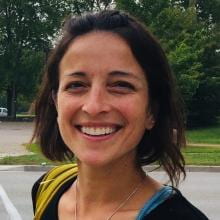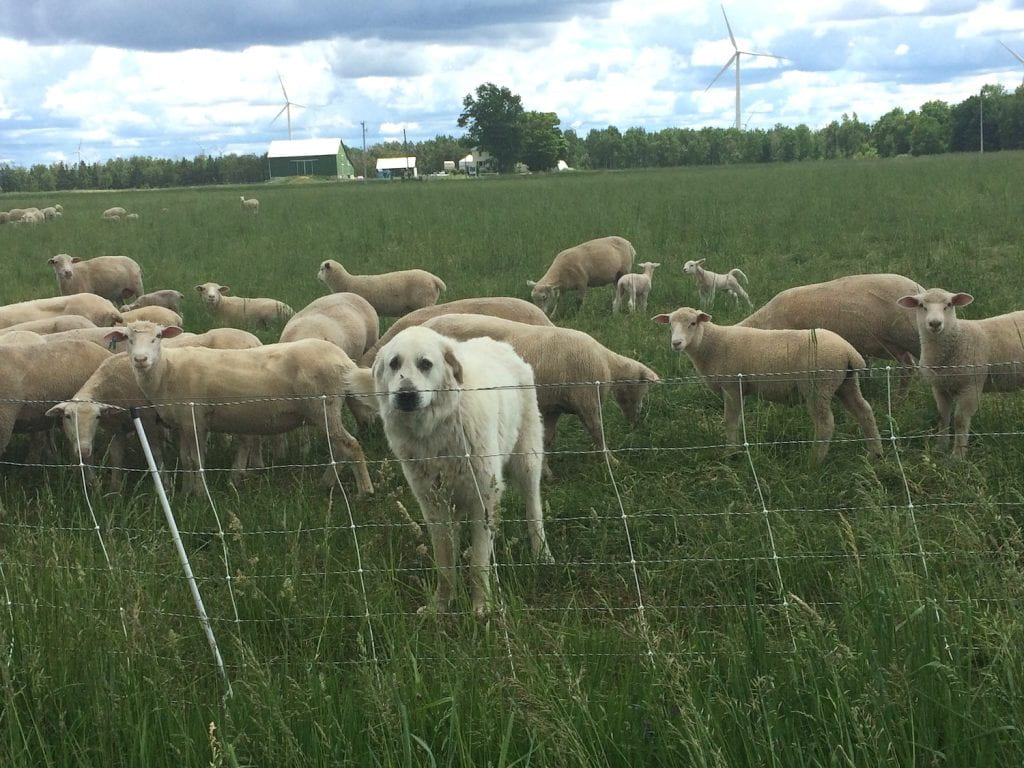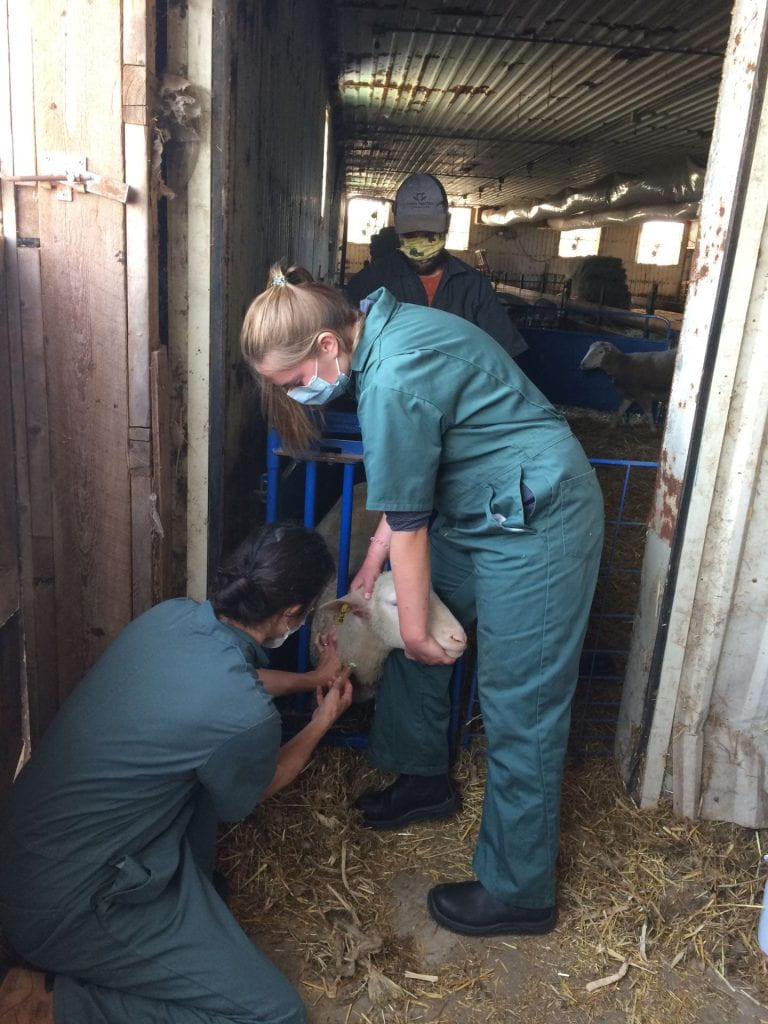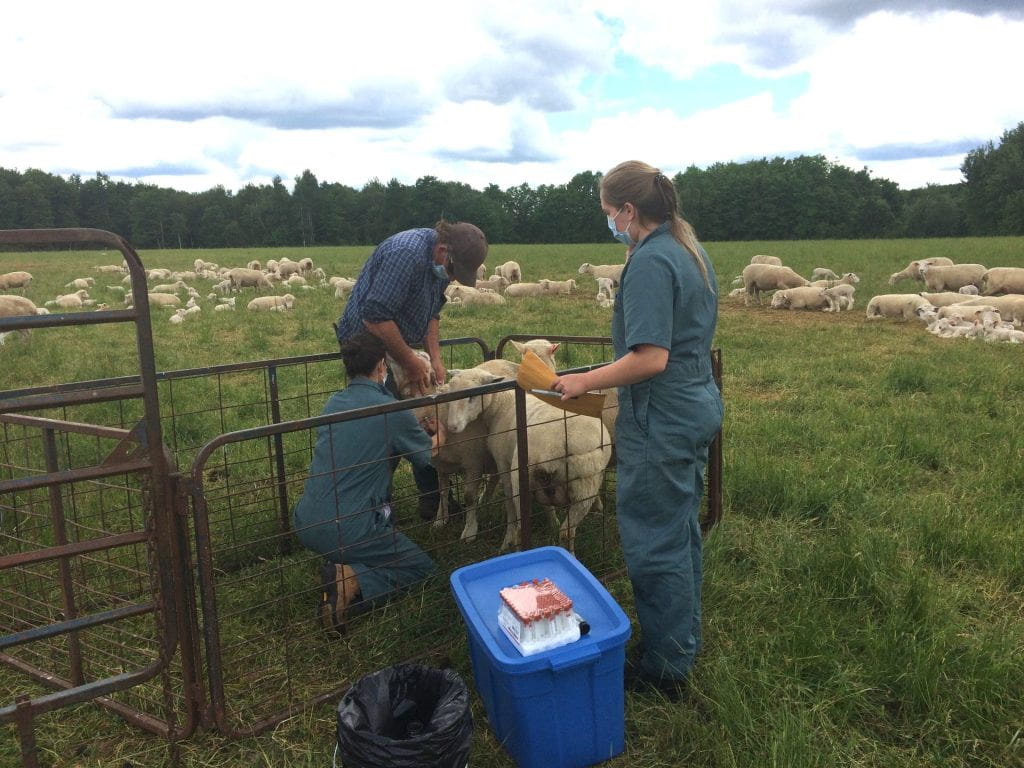Epidemiology, Engineering, and Economics – how a researcher with a background in all three is finding solutions to Cache Valley Virus disease

Michele Bergevin has been busy. After completing her Bachelor of Science (B.Sc.) in Biology and Biomedical Engineering at the Massachusetts Institute of Technology (MIT) with a minor in economics, she went on to complete her master’s in applied science (MASc) in Biomedical and Mechanical Engineering at the University of Toronto. She is also trained as a veterinary technologist.
Our story picks up at the University of Guelph, where Bergevin is a PhD candidate in epidemiology, investigating Cache Valley Virus (CVV) – a mosquito-borne zoonosis that infects both humans and animals and is most often reported in sheep. Bergevin, supervised by Drs. Katie Clow and Vicky Ng, is particularly interested in the disease in the context of climate change.

Photo credit: Dr. Paula Menzies


Photo credit: Dr. Paula Menzies
I asked Bergevin about how she made the shift – thematically and geographically – from engineering and economics, to vet tech and epidemiology.
“I have always wanted to work in infectious diseases related to wildlife veterinary medicine. My parents… were not as enthusiastic. They were very worried I would never move out! As a parent myself, I understand where they were coming from. But, I’m exactly where I want to be – in veterinary epidemiology. I just picked up additional skills along the way!” says Bergevin, noting how her background in engineering and economics gave her a leg up in problem solving, delivering on commitments, and an eagerness to engage with data trends and analytics.
Bergevin credits her diverse educational and professional background with helping her to consider the many variables associated with CVV disease.
Normally, sheep can easily fight the virus and develop antibodies that offer long term protection. However, if a pregnant ewe is infected for the first time in early pregnancy, the offspring will develop serious congenital effects, leading to spontaneous abortion or stillbirth.
CVV outbreaks are devastating to flocks and shepherds alike. In instances where a CVV disease outbreak is incorrectly diagnosed, shepherds of purebred flocks may assume resultant birth defects caused by CVV are due to flock genetics. Genetic health problems are a nightmare to shepherds – if one sheep is diagnosed with genetic health problems, that sheep and all its relatives may be culled. In a purebred flock, many of the sheep are from related lineages, meaning large culls take place if genetic problems are assumed. This compounds the financial loss that sheep farmers face from losing infected ewes and their young to an outbreak.
Interestingly, consumer behavior and economic factors driving decision making are underlying influencers of the prevalence of CVV disease. Holidays where lamb or mutton is a traditional meal create a demand for sheep at certain weight points at specific times of the year. To meet market pressures, sheep breeding ends up coinciding with the peak period of viral transmission.
Mosquito populations – which spread CVV – are sensitive to changes in precipitation and temperature, both of which are influenced by climate change. Typically, herd immunity is achieved by consistent exposure to mosquitos carrying CVV. However, if there are a few years with low rain followed by a year with heavy rain, infected mosquito populations initially dive and then subsequently surge, meaning sheep not previously exposed to the virus are at great risk of CVV disease if bred in mid-summer to early fall.
“This means that the outbreaks typically come as a surprise to farmers.” Says Bergevin.
Because there is no vaccine or treatment for this mosquito-borne disease, it is important to identify farm practices that may help to mitigate risk factors as well as those that may be unintentionally increasing risk for CVV exposure and in turn disease.
Bergevin is conducting a cross-sectional study, meaning she’s taking a snapshot in time of CVV exposure patterns across Ontario. This will help her identify associations between farm management practices and risk of viral exposure. She is also conducting spatiotemporal analyses on the mosquitos in Ontario (looking for where mosquito densities peak and when) to improve CVV surveillance and generate risk maps applicable to both humans and animals. She is developing statistical models to add more quantitative rigor to this study and hopes their application can extend to the study of other endemic mosquito-borne diseases.
Bergevin says her diverse educational background and use of the One Health approach has been invaluable for this study.
“I realized how important the business side of CVV disease is when I was conducting field work, because one of the reasons [CVV disease] persists is a result of economically driven decisions that the shepherds feel compelled to make” says Bergevin. She also stressed that the shepherds she has met and worked with across the province were open-minded, with a continuous desire to improve industry practices.
Bergevin says that she is constantly looking at the research problem through different lenses.
“To me, breadth in a One Health approach must be complemented by depth,” she says, stressing the value of not losing sight of her areas of expertise.
The research project is a collaborative effort that involves epidemiologists from the University of Guelph, entomologists from Public Health Ontario, disease modellers from the Public Health Agency of Canada, climatologists from McGill University, virology specialists from Sunnybrook Research Institute, and geospatial analysts from Esri Canada.
To find out more about Bergevin’s work, you can check out the Ontario Sheep Farms non-profit organization.
Michele’s presentation to the Board of Directors of all sheep district leaders from Ontario, and an article in their quarterly sheep magazine can be found here (scroll down a bit to the Summer 2022 issue).



